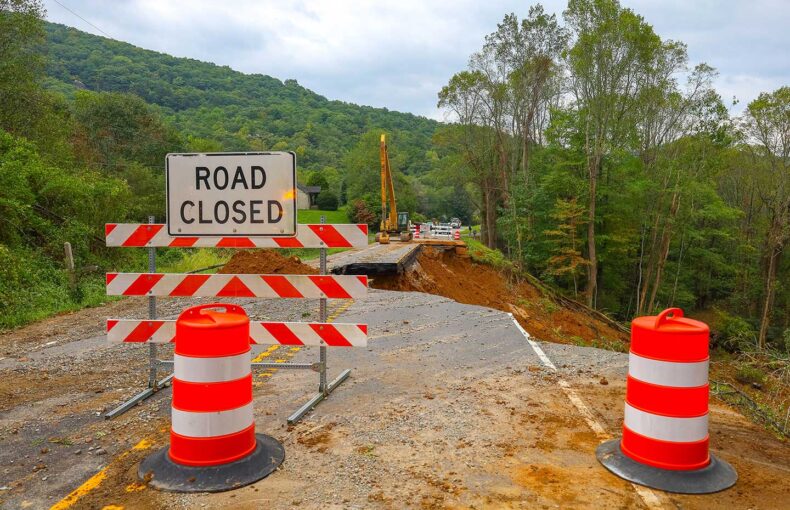Esgian: Powering a sustainable maritime industry with high-fidelity weather data
- Global maritime industry makes strides toward decarbonization
- Extreme weather conditions at sea increase operational risks for the global maritime industry
- Esgian's data-driven approach to making the maritime shipping industry sustainable
- Esgian's maritime solutions for offshore oil rigs
- Esgian's maritime solutions for the global offshore wind market
- Satellite-powered weather and AIS data fueling a sustainable maritime industry
Esgian, a Norway-based company, is making waves in the maritime industry by developing digital platforms and tools to analyze carbon emissions and measure ESG factors, as well as help energy investors make better financial decisions.
Global maritime industry makes strides toward decarbonization
Esgian, a Norway-based company, is making waves in the maritime industry by developing digital platforms and tools to analyze carbon emissions and measure ESG factors, as well as help energy investors make better financial decisions.
With a focus on shipping, offshore oil rigs, and offshore wind farm markets, Esgian delivers actionable data and insights to enable the maritime industry to become efficient, better manage safety and risk, and be compliant with new regulations. Partnering with Spire Global to power its solutions with comprehensive global weather datasets, Esgian shares the vision to steer the maritime industry toward a greener future.
The global maritime industry has been facing increasing pressure to reduce its environmental impact and transition towards greener and more sustainable operations. This shift is being driven by a combination of regulations such as the CII and EEXI indices set by the IMO, market forces, and social expectations. To meet these demands, the industry is investing in new technologies and operational practices that reduce emissions, improve energy efficiency, and minimize waste.
Esgian is leading the way in the offshore wind farms market by assessing and analyzing potential locations to build offshore farms. By studying weather patterns and wind behavior, Esgian can estimate how much potential energy can be generated if a wind farm is built at certain coordinates in the ocean. When there are high winds, operators are able to generate more output energy compared to low wind conditions. Therefore, to minimize downtime, it is preferable for operators to conduct maintenance during periods of low wind.
Stian Omli, VP of Shipping at Esgian, shares “We are examining the supply chain by tracking installation vessels, determining the amount of time required to protect individual foundations, power, and turbines. We are also identifying the locations of wind farms that produce the most energy in the world, and determining the appropriate size for turbines. Essentially, we are analyzing the entire supply chain because we believe that it is currently impossible to achieve the IMO goals by 2030 due to the lack of a streamlined supply chain. The current process takes too much time and cannot continue like this.”
However, it’s not enough to become greener as a shipping company but to provide effective service delivery as well. Omli continued by saying that “[Esgian] offers a unique product that combines sustainability, emissions benchmarking across vessels, owners and operators, and exceptional service delivery. Shipping lines require a clear emissions strategy to reduce emissions and meet demands leading up to 2030. However, being green is not enough. Shipping lines must also provide reliable and efficient transportation services to their clients. Using Spire’s AIS data, we measure the frequency, transit time, and reliability of shipping lines in the car-carrying industry. This allows us to improve service delivery while also reducing emissions.”
One of the ways the maritime industry is transitioning towards sustainability is through the adoption of low-carbon fuels. Traditional fossil fuels like heavy fuel oil (HFO) are being replaced by cleaner alternatives such as liquefied natural gas (LNG), biofuels, and hydrogen fuel cells. The use of electric and hybrid propulsion systems is also gaining popularity, particularly in smaller vessels and ferries.
In addition to fuel choices, the industry is investing in new technologies and operational practices that improve energy efficiency. This includes retrofitting existing vessels with more efficient engines, hull designs that reduce drag, and implementing energy management systems to optimize energy usage onboard.
The maritime industry is also adopting new approaches to waste management, such as waste reduction and recycling programs, and investing in technologies to reduce emissions of pollutants such as nitrogen oxide (NOx) and sulfur oxide (SOx). In sum, the industry is making significant strides toward sustainability, and as new technologies continue to emerge, it is likely that this trend will only accelerate.
In addition to technological advancements, sustainable finance is playing a pivotal role in making sustainable maritime operations financially attractive for investors.
However, the most significant way the global maritime industry is accelerating its green transition is by relying on accurate data, namely: maritime weather data. This comes as extreme weather events have caused a significant number of accidents, losses, and delays in the maritime industry.
Extreme weather conditions at sea increase operational risks for the global maritime industry
To put this into perspective, according to a recent study by Allianz, ‘bad weather accounted for one in five losses, and issues with car carriers and roll-on/roll-off (ro-ro) vessels remain among the biggest safety issues.’ Also, the same study highlights that out of 24% of the 54 shipping accidents that occurred in 2021, happened due to extreme weather conditions. Even more, a report published by The World Shipping Council reveals that the average number of containers lost overboard increased by 400% due to the intensity and frequency of extreme weather events.
It is evident that making decisions and predictions based on accurate maritime weather data sets the foundations needed for a sustainable and safer maritime industry.
Esgian’s data-driven approach to making the maritime shipping industry sustainable
Esgian uses Spire’s weather data to power parts of its Shipping Analytics, Greenpact Rigs, and Wind Analytics products. Specifically, the company leverages Spire’s satellite-powered current weather conditions data, available globally in high 3km resolutions.
For shipping, the company has developed advanced analytics software that analyzes the activity of the global RoRo fleet through a map and user-friendly platform. This allows users to compare operators’ performance in a range of parameters versus segment averages and turn data into actionable insights.
Plus, Esgian uses Spire AIS datasets to match each vessel to a commercial operator and geofence ports. With such insights, Esgian’s clients have the advantage of being able to observe RoRo trading patterns and schedules, as well as port activity and port-pair service performance with a 98% accuracy rate.
On the platform side, Shipping Analytics analyzes carbon emissions in the shipping industry which measures the carbon footprints of individual vessels, voyages, and shipping fleets, both in absolute terms and in terms of carbon intensity. Additionally, the platform compares the emissions between individual ships, fleets, operators, and countries. It also tracks the Carbon Intensity Indicator (CII) rating for individual vessels, operators, or defined fleets. Spire’s weather data is ingested into the algorithm to correct for the actual weather conditions surrounding the vessel, giving a much more accurate estimation of the vessel’s required power to maneuver.
“Weather has a direct effect on a vessel’s performance and can add resistance to its movement. Environmental factors such as wind speed and direction, ocean currents and wave heights impact a ship’s resistance which can increase its fuel utilization and its carbon footprint. Factoring in the vessel’s speed is important as well that can be retained from AIS data. However, to achieve 90% accuracy in the estimation of carbon emissions, Spire’s granular weather datasets are key,” commented Omli.
Measuring the carbon footprint of vessels not only assesses their environmental impact but also enables the evaluation of the cost and benefits of making improvements to a specific ship or contract. This evaluation helps determine whether it’s worth investing in upgrading the technology. Such upgrades can aid in calculating the total cost of offsetting ship emissions and ultimately lead to tax benefits for ship owners.
Onshore, port managers allocate their resources and assign their docks based on vessel traffic, available equipment for cargo management, and personnel. Esgian is also leveraging Spire’s AIS data to monitor the duration it takes a vessel to enter and exit a port, including the time it takes to load/unload cargo onto it.
By understanding such insights, Esgian is equipped to design and data-driven maritime products that will improve ports’ operational efficiencies. Companies such as Esgian are bolstering the smooth flow of global supply chains by helping shipping companies deliver faster, minimize delays, reduce costs and decarbonize.
Esgian’s maritime solutions for offshore oil rigs
For offshore oil rigs, the company created a robust platform that provides users with live drilling rig market data. The platform offers accurate data and analysis tools that cater to the needs of drilling rig owners, offshore rig service providers, equipment manufacturers, oil companies, shipyards, banks, and even investment funds.
These tools are specifically designed to keep stakeholders up-to-date with the latest trends and developments in the rig market, enabling them to support tendering, contracting, business development, and investment decisions. Specifically, users can compare oil rigs based on technical specifications and features, as well as do improved forecasts on demand and day rates among other benefits.
Also, Esgian leverages Spire’s hyper-localized Point-Optimised Forecast, covering over 10K locations around the world with a 1-hour refresh rate, to measure weather variables on the specific locations of its oil rigs.
Esgian’s maritime solutions for the global offshore wind market
Lastly, the company has built a bespoke solution for the global offshore wind market, providing global coverage on contracts, target and leasing, vessel activity, floating technologies and more. This market intelligence gives investors and stakeholders the opportunity to anticipate fluctuations in demand and to support contracting, business development, and investments.
Overall, Esgian’s innovative solutions are helping to make the global maritime industry more sustainable and safer for everyone involved. By reducing environmental impacts, improving safety, and ensuring compliance with regulations, Esgian is helping to create a more responsible and efficient industry for the future.
Satellite-powered weather and AIS data fueling a sustainable maritime industry
The increasing risk and frequency of extreme weather events at sea make access to advanced global maritime data more urgent than ever.
Collecting maritime data from remote ocean areas has posed a challenge for the maritime industry for a long time. Even when such data is available, it is often collected from buoys and moving vessels which results in inaccurate, delayed, and oftentimes not AI-ready data that require large computing power to assimilate and run through models.
Accurate and real-time readings of current ocean weather conditions such as wind and wave height are crucial in making reliable forecasts. With weather intelligence, shipping companies can learn to avoid a certain route to mitigate a storm, oil rigs can prepare for rough sea waves by halting operations and even evacuating the crew, and offshore wind farms can better anticipate the flow of wind.
Also, weather and AIS data play a direct role in the way ports operate. If a vessel was delayed due to unfavorable weather conditions, then it will ultimately use more fuel to arrive on time to avoid paying penalties, increasing its carbon footprint in the process. Managing vessel traffic around a port needs reliable AIS data, to know when to expect a vessel to arrive and unload/load.
Download our whitepaper on how weather and AIS data optimize port operations
An analysis conducted by SeaIntel in 2023 revealed that the average delay for late vessel arrivals had been dropping consistently since the turn of the year, a great trend to observe particularly as there has been a global increase in demand for goods and services after the pandemic. However, arrival delays remain at an average of 6-7 days throughout the year.
The underlying problem that causes these delays remains unresolved. The problem with vessel delays is that they have a widespread ripple effect, resulting in increased costs, additional risk, and more emissions as ships attempt to arrive or depart on time amidst a constant flow of ships coming and going from ports. This is a reality that cannot be ignored.
Climate change has created a new financial and environmental imperative for businesses. For example, artificial reefs made of defunct oil rigs are breathing new life into oceans, supporting marine life growth, and reducing disposal efforts. The offshore wind farms industry is also growing, with increasing investments in alternative offshore energy sources, requiring reliable maritime data to succeed.
With satellite-powered weather and AIS data, the global maritime industry now has access to near real-time data, making the journey from data to insights more streamlined. Spire builds and manages a constellation of 100+ nano-satellites in low-Earth orbit that are able to collect AIS and maritime weather data. Researchers and meteorologists now have better data to plan around all the moving elements surrounding the maritime industry: weather, vessels, ports, wind farms, oil rigs, submarines, sea ice, marine life, and more.
Working together for more than a year, Spire and Esgian share a natural synergy and vision which is to build more sustainable maritime operations. Spire’s continuous ability to collect rich, granular data from space across all points on the globe that include the open oceans puts it in a unique place to create a positive impact on Earth and solve real-world problems.
 Written by
Written by


